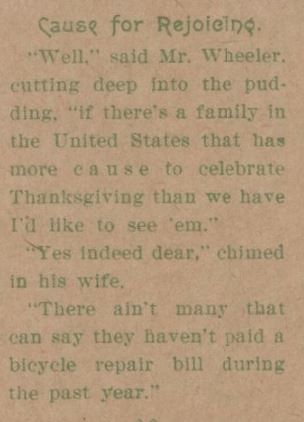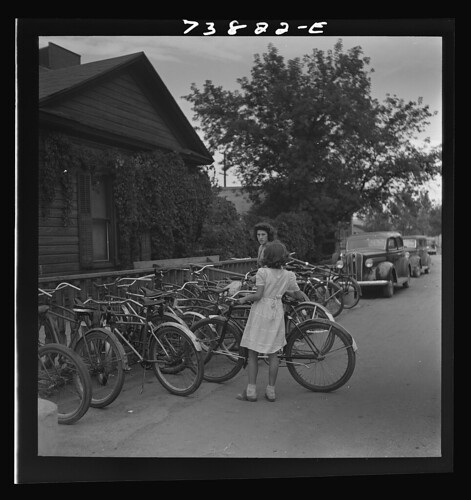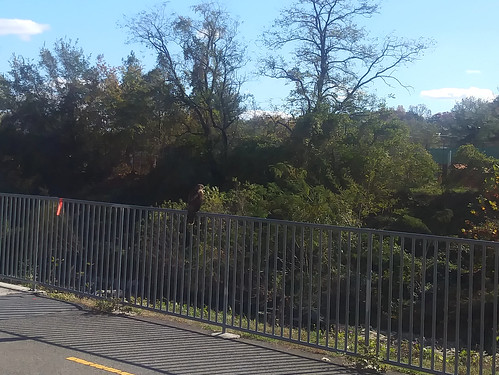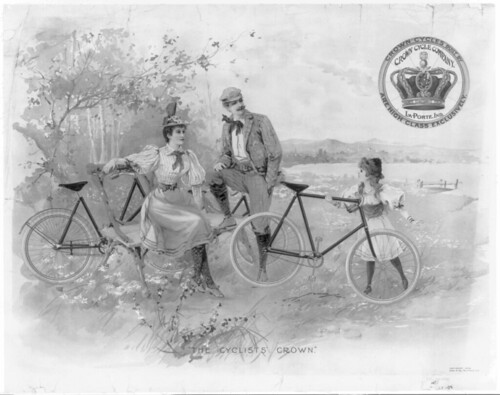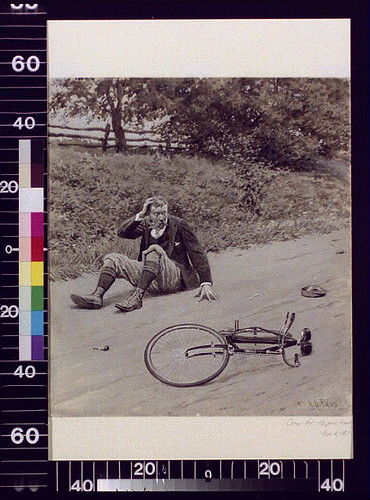
Eiffel Tower tandem bicycle of 1896
New York Journal, December 20, 1896 - human interest article (of a sort) in the New York Journal newspaper during the "bicycle craze" of the 1890s.
RECONNOITRING TANDEMThe illustration has "Sci.Am.NY" below it, which is probably giving credit to Scientific American where an article with this illustration may have appeared, although the text mentions a German publication (but seems to misspell the title?). The New York Journal newspaper of the 1890s was a relatively large newspaper in terms of pages and they filled it up with a wide variety of stories on various topics taken from other sources, the then-equivalent of click-bait. How (or if) these other publications were compensated for this re-use is not clear.
The Newest Thing in Cycles Is Twenty Feet from Mother Earth.
Probably the most grotesque production in the cycling line is the Eiffel tower tandem. Der Stein der Weiser shows an illustration of this curiosity. It is a strongly constructed bicycle, supporting a pyramid shaped frame of hollow tubing twenty feet high. On top of this frame is a saddle with handle bars and treadles, the motion of which is transmitted by chains to the corresponding lower parts of the bicycle.
The chief difficulty with which the riders have to contend is to keep the machine balanced, as will be easily understood from a glance at the illustration, but it must also be very difficult for the upper rider to reach his seat, which cannot be a very safe one.
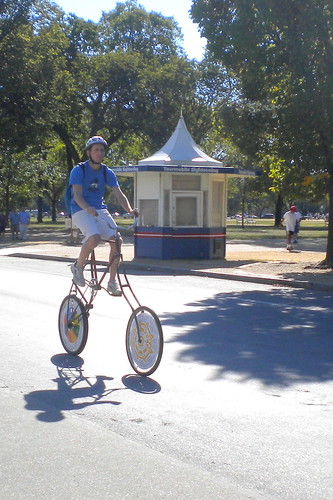
The do-it-yourself somewhat lesser modern version of this sort of thing
